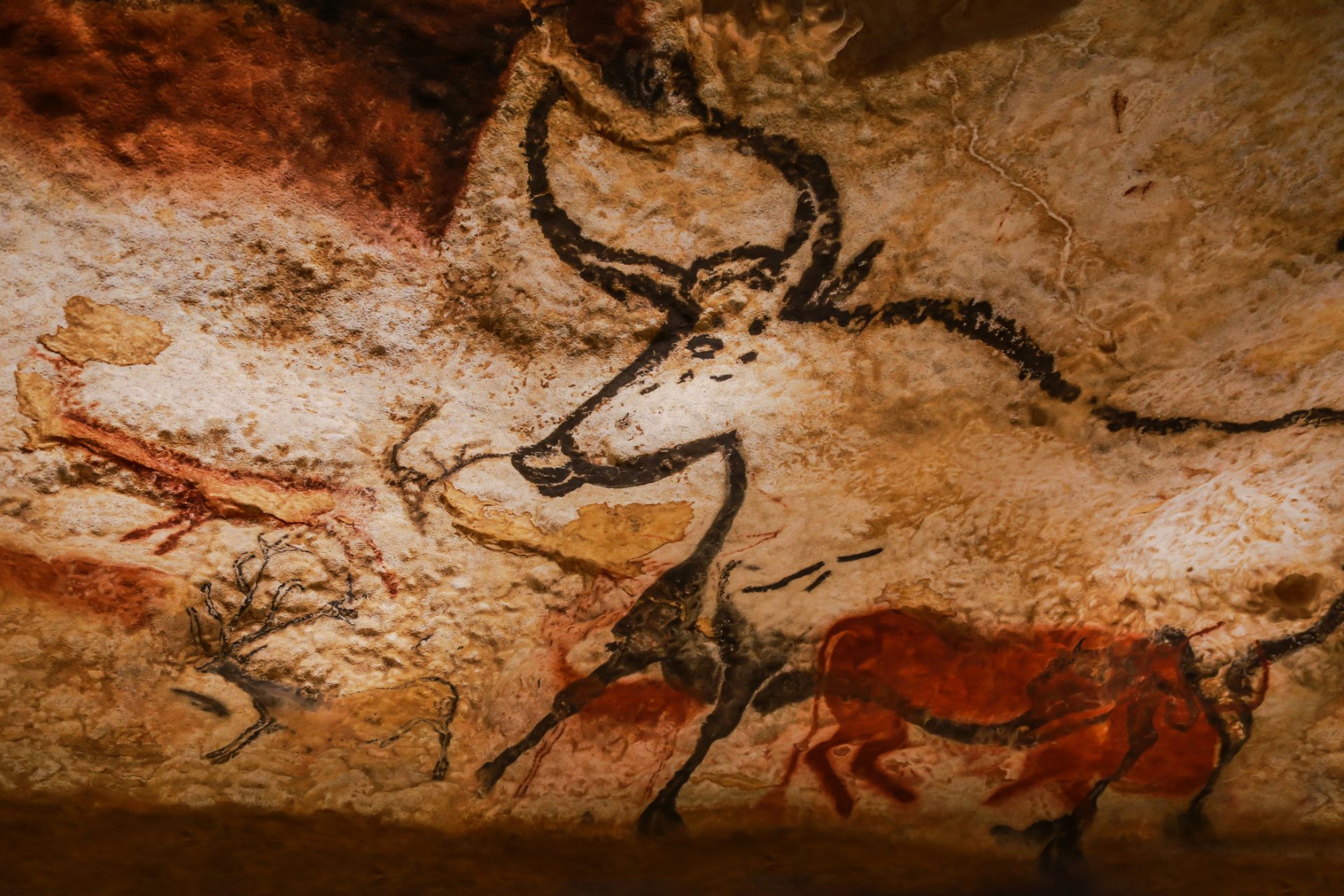Extinct: 17 animals we will never see again
When we speak of extinction, the mind transports us to the time of the dinosaurs. However, throughout more recent history many animals disappeared, either due to natural causes, by evolution itself or by the actions of man.
At the moment, 20 percent of all animal species on our planet are in danger of extinction. They face the fate of others that are already extinct. Let's remember some of those that we can never see again.
Native to Australia and New Guinea, the Tasmanian tiger - also known as a wolf instead of a tiger - was a distant relative of the Tasmanian devil, experts say.
The latest news of these striped-bodied animals, whose disappearance is attributed to hunting, dates back to the sixties of the last century. Some say that there are still specimens that have survived and are hiding from the world, but no one has been able to provide conclusive evidence to prove this.
The dodo is perhaps the animal most recognized by people when it comes to extinction - with the permission of the dinosaurs, of course. This flightless bird, large and with a more than peculiar appearance, disappeared around the end of the 18th century.
It lived on the island of Mauritius, in the middle of the Indian Ocean and near Madagascar. Of course, humans are behind its disappearance because it was hunted for its meat. Subsequently, humans also brought other types of predators to the island, and that hastened the dodo's extinction.
The woolly rhinoceros, very similar to its descendants that we know today, but much more imposing and with a good coat of hair, lived in Europe and northern Asia. It was found in places from central Spain and southern England to southern Siberia and Mongolia.
The woolly rhinoceros survived the last ice age but not the action of man, which made it disappear by hunting the animal. Other issues also contributed to its demise, such as a 'super disease' that arose due to thawing and climate change.
While the woolly rhinoceros is far behind us in history, the West African black rhinoceros, also known as the western black rhinoceros, was only declared officially extinct in 2011.
The loss of this important animal is due to irresponsible hunting and poaching, which had already been prohibited since the thirties of the last century.
Half horse, half zebra, the quaggas, too, were victims of human folly. It turns out that the great beauty of this animal, which lived in South Africa and had a brown body and striped front like zebras, led people to poach them as a trophy.
Instead of enjoying them, they preferred to kill them. Around the 1880s the last quagga was seen in captivity.
Photo: By Frederick York (d. 1903) - This file comes from the Biodiversity Heritage Library
In addition to parts of Alaska, Canada and northern Europe, moose once also inhabited Ireland. Their appearance was very similar to the moose of today, but the Irish moose was much larger.
According to scientists, this moose - or Irish deer, as it is also called - could reach a height of two meters and had antlers more than three and a half meters in length. Its extinction dates from about 7,700 years ago, and its causes were probably climate changes and hunting.
Photo: By Hutchinson, H. N., public domain
This Sirenian mammal could reach a size of eight to nine meters in length. It could weigh four to ten tons.
The Steller's sea cow appeared in the waters between the islands of Taiwan and New Guinea, but its uncontrolled hunting caused their definitive extinction in 1768.
Photo: By Emőke Dénes - kindly granted by the author, wiki commons https://commons.wikimedia.org/w/index.php?curid=16388276
The disappearance of the Pinta giant tortoise came after years of hunting and trading them, as their meat and shell were very valuable. Lonesome George appeared to be the last living specimen of the Pinta giant tortoise. He died on June 24, 2012 in the Galapagos Islands in Ecuador.
In 2019, the good news arrived that a female Pinta had been sighted on the Galapagos island of Fernandina. For now it is unclear whether the species can be preserved.
The Java tiger is not very different from other tiger types, but it was indigenous to the Indonesian island of Java.
In the case of these impressive cats, which were seen on their last legs in the mountainous areas of the island, an increase of farmland destroyed their habitat. Human action therefore indirectly caused its population to shrink until the Java tiger disappeared in 1994.
According to biologists, the golden toad, an animal in the pools of the Monteverde cloud forest of Costa Rica, was a victim of climate change. It was seen for the last time in 1989.
Global warming caused the disappearance of the humidity that this species of amphibian needed to live and procreate. The ponds that made up the golden toad's ecosystem dried up, which also caused the mists that provided necessary moisture to disappear.
Today, grizzly bears are a symbol of Canada, but in the past, we could see this imposing animal in other areas of the American continent as well. An example was Mexico.
The Mexican grizzly bear was considered officially extinct in 1964, and by the beginning of that decade there had only been 30 bears left. The reason for their disappearance was hunting by farmers in the area where they lived. The farmers responded to the grizzly attacking their livestock and killed them until there were none left.
Photo: Wikimedia Commons
In the sea and rivers there are many types of animals that oftentimes we do not take into account. This was the case of the Alabama mussel which could be found in the Mobile River and which performed the important function of filtering polluted water from the riverbed.
The mussel disappeared from Alabama around 2006 due to dangerous products being dumped in the area, which also hurt the people who lived in that area.
The gastric brooding frog disappeared, according to experts, in 1981. Originally from Australia, this amphibian, apart from having a rather peculiar reproductive process, was also the subject of studies to achieve a cure against ulcers.
To reproduce, the frog would swallow the fertilized eggs to incubate them inside. Its stomach would then swell until the moment of "giving birth," in which its ready-made and upright young would come out of its mouth.
Photo by By Benjamin Healley, Wikimedia Commons
Anyone who has seen the animated film 'Rio' (2011) will be familiar with this animal. The characters Blu and Perla were two blue macaws. It is important to cite this movie because it already warned (unsuccessfully) of the danger that this species would disappear.
The blue macaw has since become one of the latest species to be declared extinct. Endemic to Brazil, the blue macaw has perished from deforestation and from hunting for sale as exotic birds.
It wasn't long ago that seals could be seen in the Caribbean. They were native to the area, extending their territory between the north coast of South America, the east coast of Central America, and the Gulf of Mexico.
Little by little, the seals' population was reduced until it existed only on the Serranilla Bank between Jamaica and Nicaragua. There, the last Caribbean monk seal was seen in 1952.
Man is behind the main causes of its extinction: hunting - for the oil that could be extracted from their body fat - and overfishing.
Photo By New York Zoological Society.
This species of monkey lived on the African continent, between the borders of the Ivory Coast and Ghana, but it has been considered extinct since the beginning of the 21st century.
The red colobus used to move at great heights between the trees, but its groups were reduced due to the deforestation of their habitat, which exposed them to predators. The practice of inbreeding finally weakened their species. The sum of these problems led to the Red Colobus' extinction.
We can still find different types of emus on our planet, but we will never be able to see a black emu again. This species lived only on King Island, Australia.
Humans finished them off long ago - back in the 19th century - when the island was colonized and the species was reduced by the action of men until it disappeared forever.
More for you
Top Stories

















































